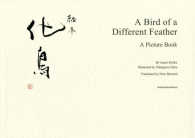- ホーム
- > 洋書
- > 英文書
- > Computer / General
基本説明
Computational neuroscience is a growing research area. This book is a unique contribution to this growing area, presenting a complete range of discussion, from the analysis of the problem, to measurements of final hardware implementation. CD-ROM containing. Demonstration material to illustrate topics in visual motion perception, optical flow estimation and motion segmentation.
Full Description
Although it is now possible to integrate many millions of transistors on a single chip, traditional digital circuit technology is now reaching its limits, facing problems of cost and technical efficiency when scaled down to ever-smaller feature sizes. The analysis of biological neural systems, especially for visual processing, has allowed engineers to better understand how complex networks can effectively process large amounts of information, whilst dealing with difficult computational challenges. Analog and parallel processing are key characteristics of biological neural networks. Analog VLSI circuits using the same features can therefore be developed to emulate brain-style processing. Using standard CMOS technology, they can be cheaply manufactured, permitting efficient industrial and consumer applications in robotics and mobile electronics.
This book explores the theory, design and implementation of analog VLSI circuits, inspired by visual motion processing in biological neural networks. Using a novel approach pioneered by the author himself, Stocker explains in detail the construction of a series of electronic chips, providing the reader with a valuable practical insight into the technology.
Analog VLSI Circuits for the Perception of Visual Motion:
analyses the computational problems in visual motion perception;
examines the issue of optimization in analog networks through high level processes such as motion segmentation and selective attention;
demonstrates network implementation in analog VLSI CMOS technology to provide computationally efficient devices;
sets out measurements of final hardware implementation;
illustrates the similarities of the presented circuits with the human visual motion perception system;
includes an accompanying website with video clips of circuits under real-time visual conditions and additional supplementary material.
With a complete review of all existing neuromorphic analog VLSI systems for visual motion sensing, Analog VLSI Circuits for the Perception of Visual Motion is a unique reference for advanced students in electrical engineering, artificial intelligence, robotics and computational neuroscience. It will also be useful for researchers, professionals, and electronics engineers working in the field.
Contents
Foreword. Preface.
1 Introduction.
1.1 Artificial Autonomous Systems.
1.2 Neural Computation and Analog Integrated Circuits.
2 Visual Motion Perception.
2.1 Image Brightness.
2.2 Correspondence Problem.
2.3 Optical Flow.
2.4 Matching Models.
2.4.1 Explicit matching.
2.4.2 Implicit matching.
2.5 FlowModels.
2.5.1 Global motion.
2.5.2 Local motion.
2.5.3 Perceptual bias.
2.6 Outline for a Visual Motion Perception System.
2.7 Review of aVLSI Implementations.
3 Optimization Networks.
3.1 AssociativeMemory and Optimization.
3.2 Constraint Satisfaction Problems.
3.3 Winner-takes-all Networks.
3.3.1 Network architecture.
3.3.2 Global convergence and gain.
3.4 Resistive Network.
4 Visual Motion Perception Networks.
4.1 Model for Optical Flow Estimation.
4.1.1 Well-posed optimization problem.
4.1.2 Mechanical equivalent.
4.1.3 Smoothness and sparse data.
4.1.4 Probabilistic formulation.
4.2 Network Architecture.
4.2.1 Non-stationary optimization.
4.2.2 Network conductances.
4.3 Simulation Results for Natural Image Sequences.
4.4 Passive Non-linear Network Conductances.
4.5 Extended Recurrent Network Architectures.
4.5.1 Motion segmentation.
4.5.2 Attention and motion selection.
4.6 Remarks.
5 Analog VLSI Implementation.
5.1 Implementation Substrate.
5.2 Phototransduction.
5.2.1 Logarithmic adaptive photoreceptor.
5.2.2 Robust brightness constancy constraint.
5.3 Extraction of the Spatio-temporal Brightness Gradients.
5.3.1 Temporal derivative circuits.
5.3.2 Spatial sampling.
5.4 Single Optical Flow Unit.
5.4.1 Wide-linear-range multiplier.
5.4.2 Effective bias conductance.
5.4.3 Implementation of the smoothness constraint.
5.5 Layout.
6 Smooth Optical Flow Chip.
6.1 Response Characteristics.
6.1.1 Speed tuning.
6.1.2 Contrast dependence.
6.1.3 Spatial frequency tuning.
6.1.4 Orientation tuning.
6.2 Intersection-of-constraints Solution.
6.3 Flow Field Estimation.
6.4 DeviceMismatch.
6.4.1 Gradient offsets.
6.4.2 Variations across the array.
6.5 Processing Speed.
6.6 Applications.
6.6.1 Sensor modules for robotic applications.
6.6.2 Human-machine interface.
7 Extended Network Implementations.
7.1 Motion Segmentation Chip.
7.1.1 Schematics of the motion segmentation pixel.
7.1.2 Experiments and results.
7.2 Motion Selection Chip.
7.2.1 Pixel schematics.
7.2.2 Non-linear diffusion length.
7.2.3 Experiments and results.
8 Comparison to Human Motion Vision.
8.1 Human vs. Chip Perception.
8.1.1 Contrast-dependent speed perception.
8.1.2 Bias on perceived direction of motion.
8.1.3 Perceptual dynamics.
8.2 Computational Architecture.
8.3 Remarks.
Appendix.
A Variational Calculus.
B Simulation Methods.
C Transistors and Basic Circuits.
D Process Parameters and Chips Specifications.
References.
Index.








